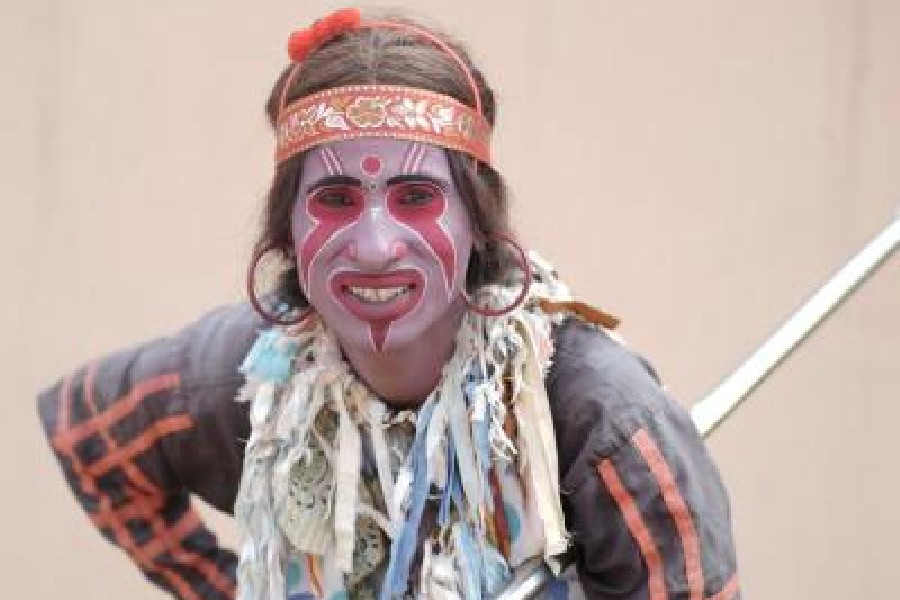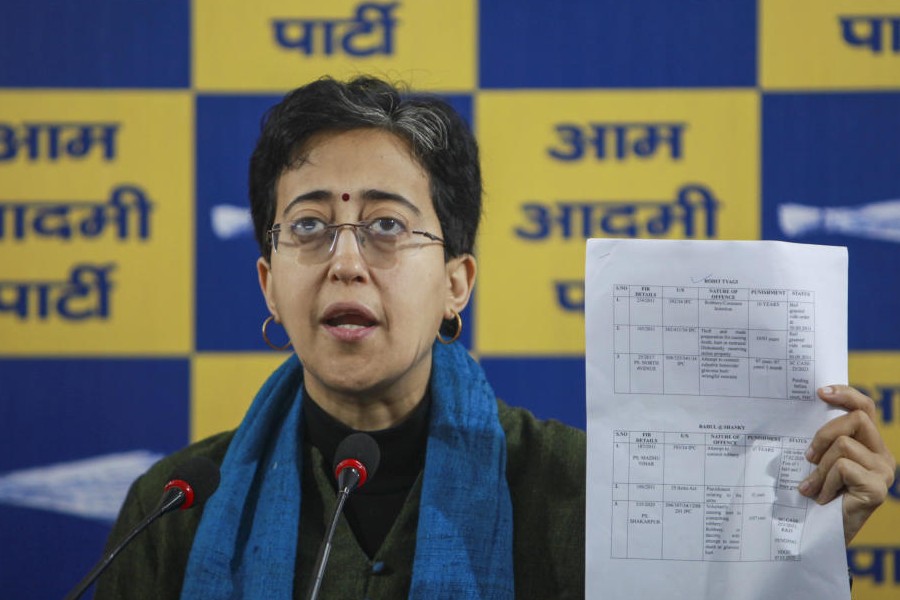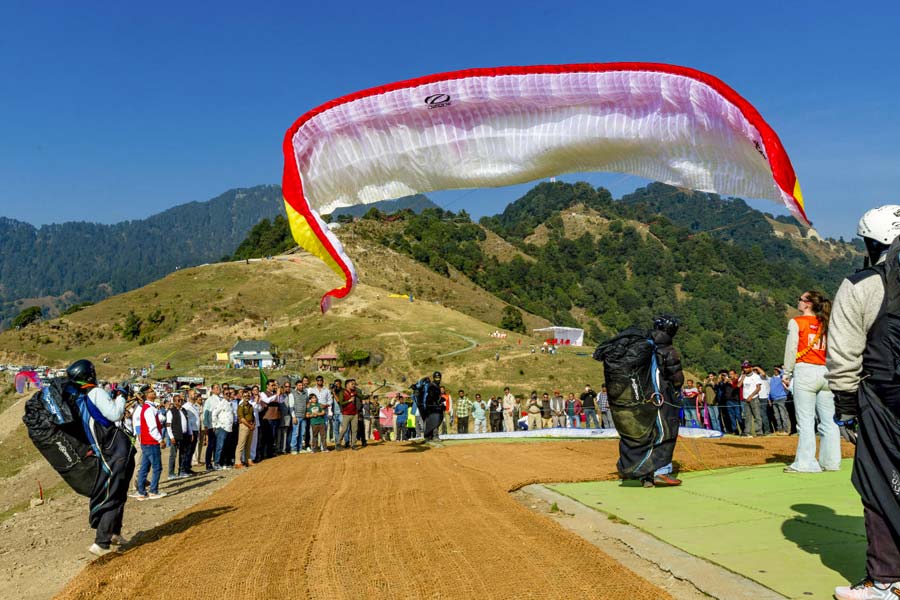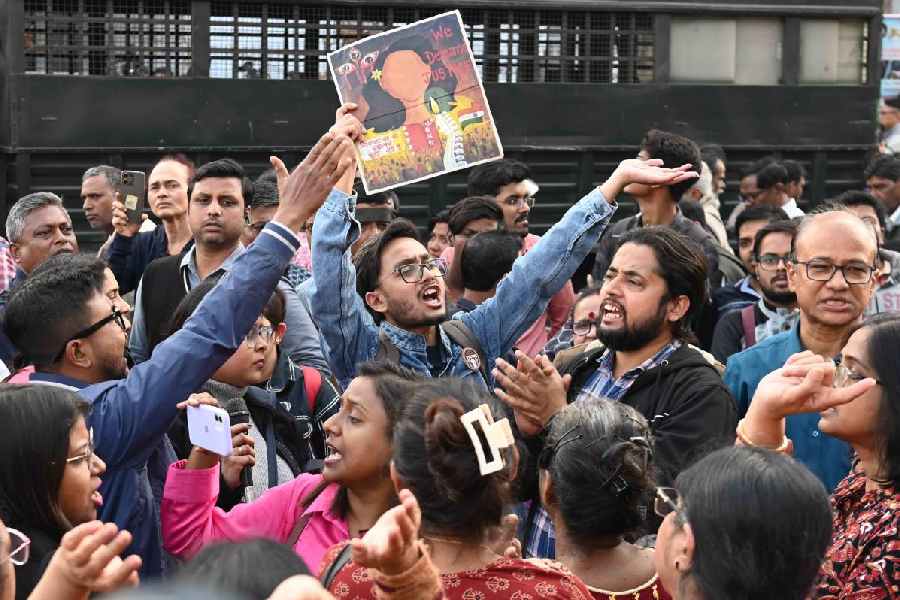Motor kolai gol gol, dante bhange na/Ei parar boumara sasuri maane na... The rap-style nonsense rhyme has gone viral ever since it featured in the recently released Bengali movie Bohurupi.
Bahurupis, who are men and women of multiple guises, entertain people in Birbhum, Malda, Murshidabad and Burdwan districts of Bengal. Their traditional style, however, is to dress up as mythological figures — Kali, Shiv, Parvati, Krishna, Hanuman and so on. Though rare, one can still spot them on the streets of Calcutta once in a while.
“The film is our tribute to the nearly extinct art of bahurupis,” director Shiboprosad Mukherjee tells The Telegraph. “It gives us immense satisfaction that these neglected artistes are getting some respect ever since the movie was released,” he adds.
The film features a real-life bahurupi, Noni Chora Chowdhury Byadh, whose screen name is Noni Chora Das Baul. Noni has composed the lyrics and music for three songs in the film Bohurupi.
One of them, Shimul Polash, has turned out to be a huge hit with over 8 lakh views and thousands of downloads as caller tunes for mobile phones. No less than singer-composer A.R. Rahman has shared the song on his X handle with a congratulatory message for the team.
Mukherjee’s film is based on the true story of bank robber Sheikh Ekhlas who carried out a series of daring heists in Bengal between 1998 and 2005. He would disguise himself during these escapades to fool the police. In the film, Noni plays a character on the side.
When The Telegraph contacts Noni, he is in his village — Bishaypur in Birbhum district — firming up a number of stage shows. Although they usually perform in open spaces such as village squares, fairs and pilgrimage sites, many bahurupis get contracts for stage shows. Traditionally, they would receive grains from farmers in exchange for their performances.
Noni’s dates are all blocked until mid-February. Bishaypur, which is 200 kilometres northwest of Calcutta, is home to scores of bahurupis.
Why is he seen chanting nonsense rhymes in the film? Noni replies, “I was impersonating Tarasundari or Khyepi, a madwoman. She would sing nonsense claims. One such being she’d received a marriage proposal from the Raja of Burdwan."
Dilip Choudhury Byadh, 56, is a veteran bahurupi. He is knowledgeable about the nuances of the art. It is he who explains why all bahurupis take the surname Byadh. “Our ancestral occupation was hunting.” Many bahurupis of Bengal, Odisha and Jharkhand were pakhmaras or bird hunters who disguised themselves as tigers, bears and langurs. A few years ago, a large section of bahurupis was recognised as Scheduled Tribe.
As Choudhury tells it, bahurupis have been integral to society since the times of the Puranas, Ramayana and Mahabharata. He invokes the demon king and Ravan’s kin, Mahiravan and Maarich, who were actually expert disguise artistes. He talks about Brihannala, Arjun’s assumed identity when he sought refuge in King Virat’s court. Choudhury says he can slip in and out of 15 different looks. He uses a combination of makeup, costumes and mimicry to transform into multiple characters.
Folk art researcher and writer of the Bengali book Banglar Bahurupi, Aditya Mukhopadhyay says that many a time, British administrators and zamindars deployed bahurupis in remote areas for espionage. He says, “They would gather information and get a sense of grievances and possible unrest.”
Ritwik Ghatak introduced bahurupis to the Bengali screen. Sarat Chandra Chattopadhyay’s novel Srikanto features a character called Chhinath, who dresses as a royal Bengal tiger and makes a sudden appearance at the protagonist’s house.
Writer and folk researcher Swapan Kumar Thakur says, “Bahurupis were traditional rural actors or natas. The Jataka tales, Puranas and even Alberuni’s Tahqiq-i-Hind make note of their presence.” These actors danced, sang and performed mimicry and acrobatics in public places and entertained the rural audience.
“Our art is gradually going extinct. My son has reluctantly taken up the profession,” says Choudhury whose father and grandfather were renowned mimic men. “Many young men in our community are turning into farmhands, or taking up other petty but better-paying jobs. The state government’s measly stipend in a bid to revive the traditional art is not enough,” he continues.
Incidentally, the government machinery uses bahurupis as human platforms to spread messages of social awareness. In 2020, bahurupis were engaged by Birbhum police to spread messages about Covid awareness. On the day of his interview, Dilip is in the middle of a social awareness campaign about the evils of the dowry system and child marriage.
He is unimpressed by the success of the film Bohurupi. Instead, he says, somewhat philosophically, “Most of us are bahurupis after a manner, playing different social and familial roles. No?”











